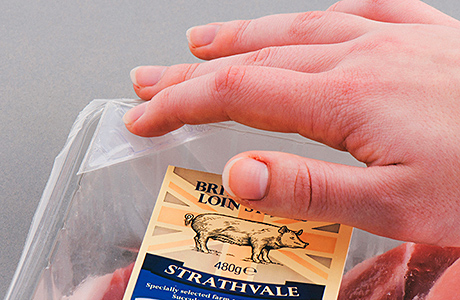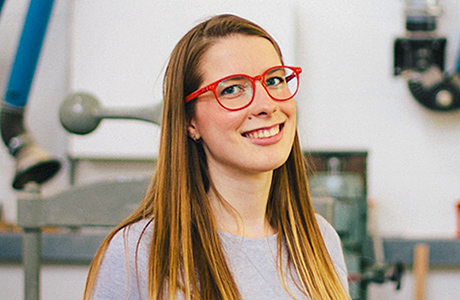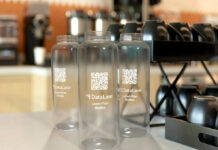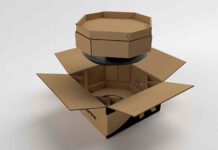
A tactile method of appraising the freshness or otherwise of foods in your fridge has picked up a major design award for its creator.
The bio-reactive label – the ‘Bump Mark’ – developed by 23-year-old Brunel University industrial design graduate Solveiga Pakstaite triumphed in the UK round of the highly-regarded James Dyson award.
A gelatine-filled food label is the basis for the approach. Bumps under the label cannot be felt initially, but as the gelatine decays over time it liquifies, and it becomes possible to feel the underlying bumps with your finger.

The fact that gelatin is a protein means it decays at the same rate as other protein-based foods such as meat, milk and cheese. By altering the concentration of gelatine in the label, you can alter the rate of change of the label’s texture. The greater the concentration, the longer the gel will stay solid.
Originating in efforts to produce innovations that could help the blind, Pakstaite’s research addresses the problem of food waste, and the fact that around 1.3 billion tonnes of food every year ends up in the bin (according to the report “Food Wastage Footprint: Impacts on Natural Resources” produced by the UN Food & Agriculture Organisation).
Best before and sell-by dates have faced criticism for their unreliability, and growing awareness that they are mainly used for retailers’ quality control, rather than to keep consumers informed.
Another appeal of Pakstaite’s solution is that it promises to be cheap to deploy. So far she has produced 20 prototypes, which have been tested for user perception and performance.
This round of the contest attracted over 600 entrants. The Bump Mark label will progress to the international stages of the Dyson award, along with four UK runner-up winners. Pakstaite is working to commercialise it.













